
linen
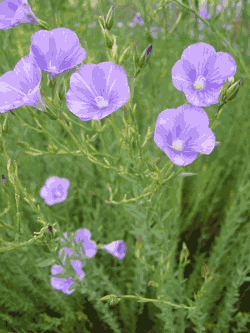
Linen is thought to have originated in Asia. Before the christian era it has already conquered Northern Europe. When the Romans arrived in Gaul (57 b.C.) they discovered huge linen fields. The plant, about one meter high, is sown by the end of March and harvested in June. Its delicate blue or white flowers last but a single day. The fibers are extracted from the stem where they are enclosed between the outer epidermis and the hard core. Not to waste any of it the stem is not cut but the whole plant is pulled out.
Linen is the oldest known plant textile fibre. Some Egyptian tombs have revealed perfectly preserved linen fabrics. It is often associated with religious ceremonies, the robes of the priests and priestesses being made of linen. The Bible tells us that the veils of the Tabernacle were made of linen, as well as the vestment of Aaron the high priest. And the Gospel, that the seven Angels of Revelation are clad in linen.
Linen is the oldest known plant textile fibre. Some Egyptian tombs have revealed perfectly preserved linen fabrics. It is often associated with religious ceremonies, the robes of the priests and priestesses being made of linen. The Bible tells us that the veils of the Tabernacle were made of linen, as well as the vestment of Aaron the high priest. And the Gospel, that the seven Angels of Revelation are clad in linen.
Owing to the wax it naturally contains, linen has a cold luster, a gloss that the wool does not have. Suitably associated with it, it allows for a relief effect especially noticeable with mixed fancy stitches. More difficult to work than wool it has been widely used in the 18th century to stitch wear- and dust-resistant seats.
(from « La tapisserie au point : un art, une technique » by Véronique de Luna )
France is Europe's main producer, far ahead of her only competitors Belgium and the Netherlands, and exports her seeds in the whole world.
(from « La tapisserie au point : un art, une technique » by Véronique de Luna )
France is Europe's main producer, far ahead of her only competitors Belgium and the Netherlands, and exports her seeds in the whole world.
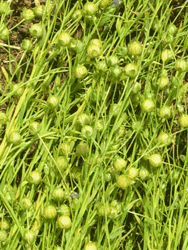
After the little blue flowers have fallen off one sees on top of each stem the pod which holds the seeds.
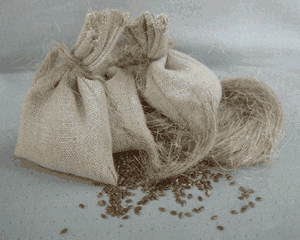
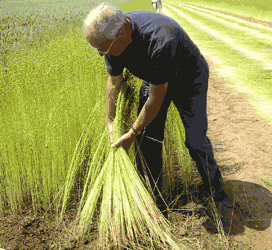
In days of old the stalks were pulled out in armfuls.
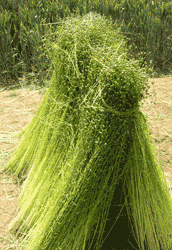
Nowadays the machines pull them out and line them up on the ground.
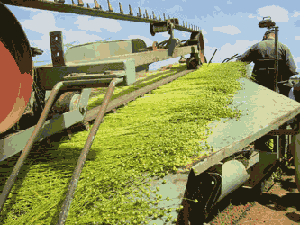
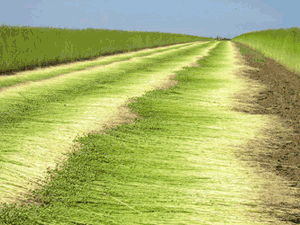
They will stay there waiting to be attacked by microorganisms and mushrooms. This is the retting, followed by the scutching, which is the separation of the straw from the fiber, and finally the combing. The linen is then ready to be spun.
We can supply it in 100g hanks and in 15g skeins.
See on this page colors and prices.
We can supply it in 100g hanks and in 15g skeins.
See on this page colors and prices.
 retour à l’accueil
retour à l’accueil français
français deutsch
deutsch